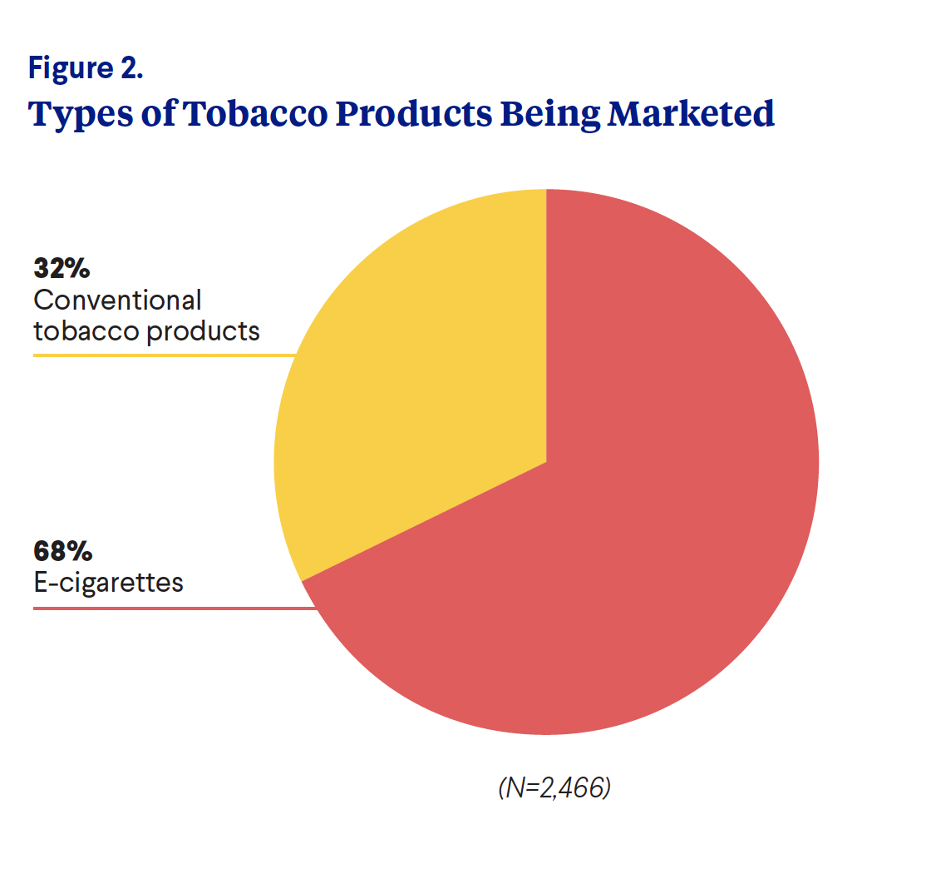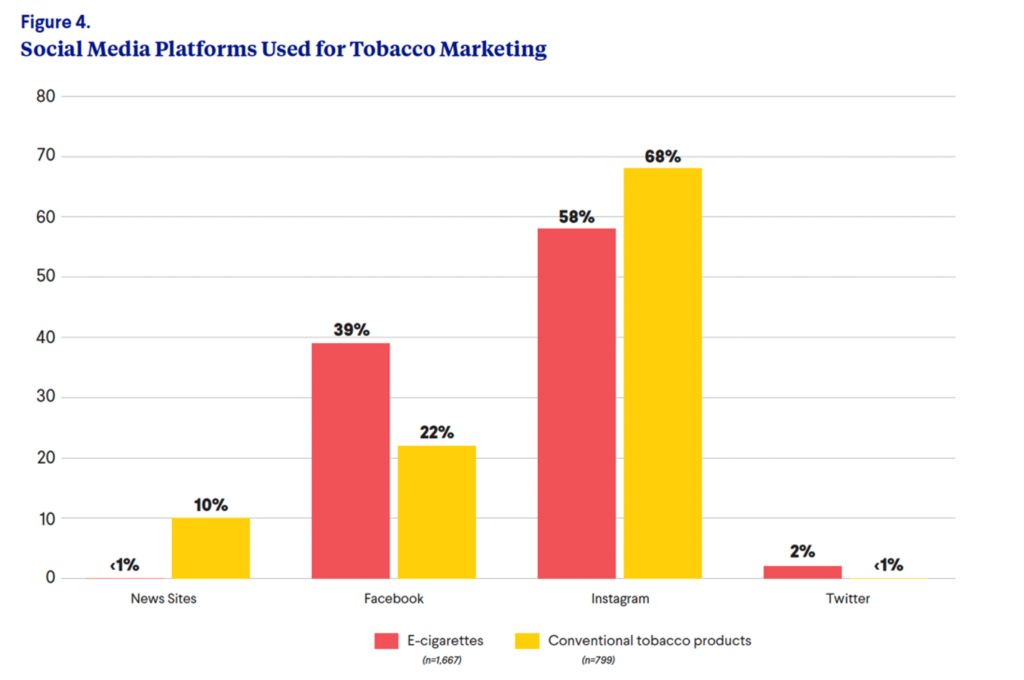Q&A with Ancha Rachfiansyah and Melina Samar Magsumbol, conducted by Carlos Martinez-Mejia
Indonesia has among the world’s highest rates of tobacco use and weak tobacco control regulations, which has made the country a desirable target for the e-cigarette industry. E-cigarette use has been steadily growing in the country since 2015, and it is soon projected to have Southeast Asia’s largest e-cigarette market.
What may be contributing to this rise? E-cigarette companies are aggressively promoting and selling their products on social media and using content designed to reach their ideal consumer: young people.
Using data from Vital Strategies’ real-time digital media monitoring system Tobacco Enforcement and Reporting Movement (TERM), our recently published report, “Vape Tricks in Indonesia: How E-Cigarette Companies Use Social Media To Hook Youth,” offers a first look into online e-cigarette marketing in Indonesia.
To learn more about the report and its findings, we spoke with co-authors Ancha Rachfiansyah, Communication Officer, Indonesia and Melina Samar Magsumbol, Research Manager.
What are e-cigarettes? Why are they a threat to public health?
Ancha Rachfiansyah: E-cigarettes are battery-operated devices designed to deliver an inhaled dose of nicotine and/or other substance by heating a liquid solution (e-liquid) at a high enough temperature that it produces an aerosol. The solution and aerosols have nearly 2,000 unknown chemicals, as well as substances that are known to be harmful to health, including carcinogens. Most e-cigarettes also contain nicotine, which is highly addictive and can cause brain development issues. Recent research has also found that e-cigarette use may increase a person’s risk of developing cardiopulmonary diseases.
Although global cigarette smoking rates have fallen significantly in recent years, e-cigarettes have quickly surged in popularity, especially among youth. This intentional targeting of young people is intended to give companies long-term consistent users.
Why should we be concerned about online e-cigarette marketing in Indonesia?
Ancha Rachfiansyah: Exposure to e-cigarette marketing, including via social media, is associated with increased use among young people. Currently, Indonesia does not regulate e-cigarette marketing and companies are undermining social media platforms’ community guidelines that ban such marketing, to reach their target audience through these platforms.
This is concerning because we are already dealing with a tobacco crisis in Indonesia, with high rates of tobacco use among youth ages 13-15 (19%) and more than two-thirds of adult men still using conventional tobacco products. Most e-cigarette users continue to smoke (what is called “dual use”), with potential cardiovascular risks higher than either e-cigarette use or smoking individually. We need to counter the industry’s narrative to make sure that young people are aware that these aren’t just harmless lifestyle products and to prevent more young people from getting hooked.
Vape tricks: “Vape tricks” involve using e-cigarettes to blow large, thick amounts of exhaled aerosol (e.g., clouds) or shapes such as rings.
How much and where are e-cigarettes being marketed online?
Melina Samar Magsumbol: Our team found that online marketing of e-cigarettes far surpassed marketing for conventional tobacco products like cigarettes and chewable tobacco; it made up more than two-thirds (68%) of the marketing we observed. Interestingly, for TERM we also monitor marketing in India where less than 10% of online tobacco marketing is for e-cigarettes, which shows the extent to which these products are flooding the market in Indonesia.
The majority of e-cigarette marketing was through Instagram (58%), which is very popular among young people and now has more active users than Facebook in Indonesia. Instagram is visual so it offers marketing opportunity for e-cigarette companies, which tend to play up features like device colors and flavors and which use influencers to model products and repost video content of users doing “vape tricks” (see cover image). It has also become the go-to platform for businesses in Indonesia since the platform has become increasingly popular for brand discovery.


What kind of marketing tactics and messages are being used?
Melina Samar Magsumbol: E-cigarettes are being directly marketed on social media platforms with the product in clear view and content that is designed to draw viewers to online retail sites. The image of the products, brand names, and shopping websites/apps can be seen by everyone, including minors who spend a lot of time on social media. Some accounts post sales promotions and promote the activities they are sponsoring, such as roller skating, concerts and race car events, which are popular among young people.
Most of the ads highlight the technology features of e-cigarettes like number of puffs, the “sleek design” and portability, as well as the variety of available flavors and colors. There were many examples of popular young people (influencers or “vape models”) posing and using e-cigarettes. We also observed instructional videos for cleaning or changing parts of the e-cigarettes, and videos of different types of “vape tricks.”
These posts are designed to renormalize smoking by changing the attitudes and behaviors of the younger generation. Young people are curious and are easily influenced by their peer group or people they follow on social media. Seeing peers using e-cigarettes as if it’s the norm is a very important signal that can drive behavior.

How can Indonesia and other countries address online e-cigarette marketing?
Ancha Rachfiansyah: The purpose of TERM is to provide governments with critical data that can inform tobacco control policymaking. TERM is currently operating in Indonesia and India and is coming soon to Mexico.
Indonesia currently has no regulations on internet marketing of tobacco products, including e-cigarettes; in fact, there are effectively no regulations on e-cigarettes at all. Strengthening restrictions on tobacco advertising, promotion and sponsorship (TAPS), including a ban on internet marketing and sales, is an effective policy lever to prevent e-cigarette companies from targeting young people. However, even when there are strong TAPS restrictions, there must be continued monitoring and enforcement of violations. Consumers, especially young ones, should be made aware of deceitful marketing tactics. We must also continue to counter e-cigarette industry narratives through communication that stresses the harms of these products.
Governments can avoid the heavy economic and health burden of youth nicotine addiction by regulating the e-cigarette industry now and by ensuring that these restricted products remain inaccessible and unavailable to minors online and in person.
How do we stay apprised of trends in online e-cigarette marketing in Indonesia?
TERM puts out ongoing situation reports that provide an overview of online tobacco marketing in Indonesia, including for e-cigarettes. You can visit the TERM website to view the reports or subscribe to receive them straight to your email inbox.
Learn more about our tobacco control work here and here, follow us on Twitter @VitalStrat and stay up to date on the latest in tobacco control by signing up for our newsletter.
Get Our Latest Public Health News
Join our email list and be the first to know about our public health news, publications and interviews with experts.